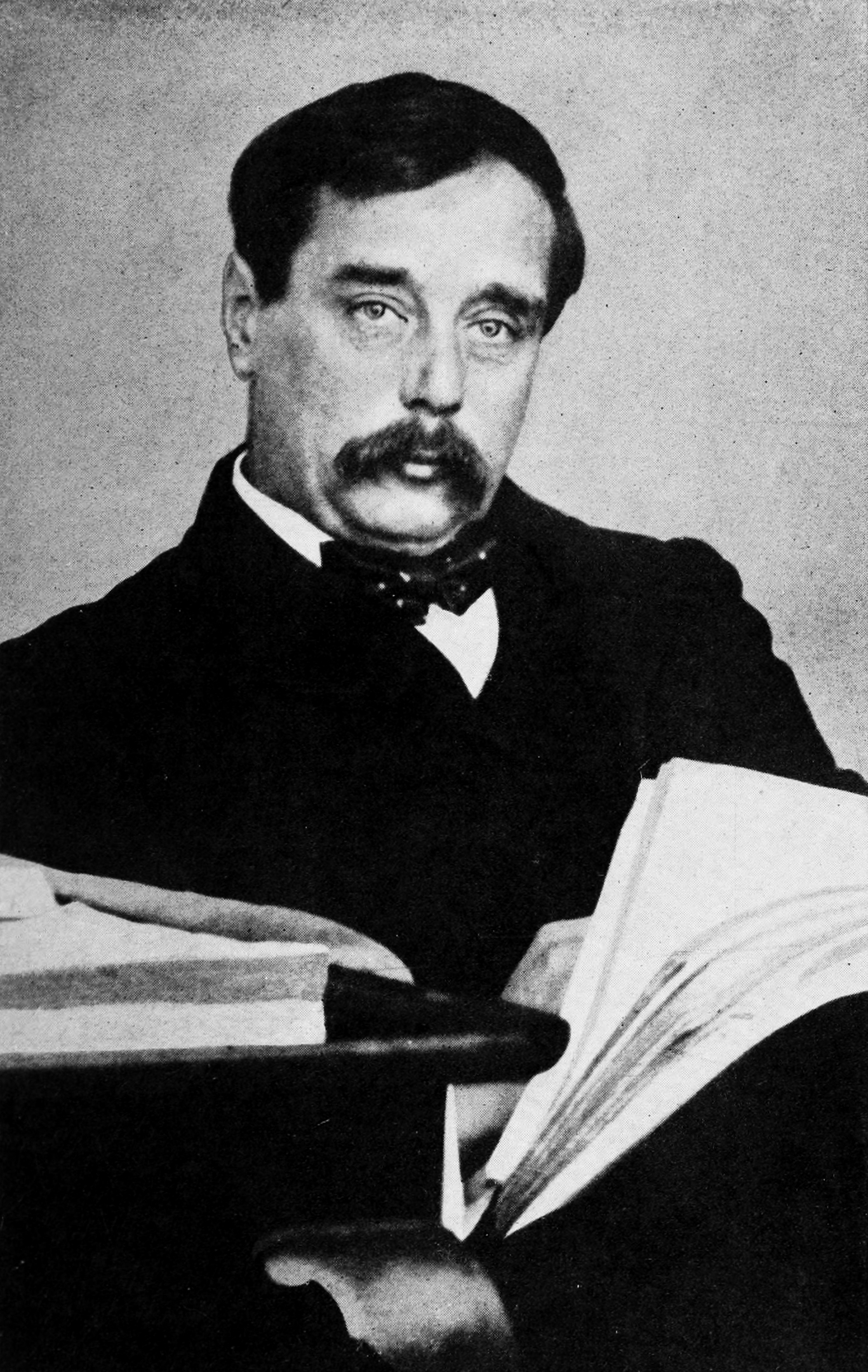“P ollock and the Porroh Man” is a short story by the English author H. G. Wells (1866–1946), first published in the New Budget on 23 May 1895 and subsequently reprinted in The Plattner Story and OthersCollection of 17 short stories by H. G. Wells, first published in 1897. (1897).[1] Written as a horror story in the manner of Edgar Allan Poe (1809–1849),[2] it tells of a murdered witch-doctor in Sierra Leone whose severed head haunts the man responsible for his death. The story is told as a third-person narrative by an unnamed narrator.
Synopsis
Pollock is a member of an expedition exploring the West Coast of Africa, and the story begins as he is visiting a local woman in her hut. A Porroh man[a]A witch doctor of a tribal pagan religion. bursts in and stabs the woman in the heart and attempts to stab Pollock as well, but the latter has a revolver with which he manages to deflect the blade. Firing, he hits the Porroh man in the hand, and the man flees. But the woman is dead, and Pollock decides that he must inform his expedition leader, Waterhouse, about what has happened.
To Pollock’s surprise, Waterhouse takes the matter much more seriously than he had imagined. Waterhouse determines that he must be sent back home to England as soon as possible, for his own safety, as unknown to Pollock the dead woman had belonged to the Porroh man:
Waterhouse decides to escort Pollock to Sulyma,[b]Modern-day Sulima, on the southwestern coast of Sierre Leone. from where he can get passage on a boat to Freetown and hence back to England. During their trip Shakspear, one of the natives accompanying the expedition, tells Pollock about the power of the Porroh, how they can cast spells that make men wither and die, and send dreams and devils. Waterhouse leaves Pollock at Sulyma, believing him to be relatively safe there, and returns to his expedition’s headquarters. But there is no ship sailing to Freetown for five days, during which time Pollock becomes very friendly with Perera, the only resident white trader at Sulyma, who has spent some time in England.
On the second evening Pollock is hit by a lump of filed iron, but the projectile has spent almost all of its energy when it strikes, thus causing only superficial damage. But Perera takes the matter very seriously, and asks whether Pollock has been having any bad dreams, or any unexplained pains. Pollock admits to having nightmares about the Porroh man’s head, and that ever since the night of the killing in the hut he has been suffering from what he thought was rheumatism caused by the bad air. Pollock is sufficiently concerned that he hires a local native to kill the Porroh man in exchange for a double-barrelled gun. That same evening the native returns with a blood-soaked cloth containing the Porroh man’s head.
Horrified, Pollock tries to dispose of the head. He buries it, but it is dug up by a dog who brings it back; he throws it into the sea, but it is washed up on the beach and offered back to him as a curio by the native who finds it. He builds a fire and throws the head upon it just before he boards the steamer on the first leg of his trip home, only for the captain to confide in him on the journey that he had picked up a “rummy curio on the beach”, the Porroh man’s head.
Although Pollock leaves the head with the captain of the steamer for the final leg of his journey to England, he begins to see it everywhere nevertheless. He realises it is part of a “filmy phantasmagoria18th-century ghost show developed by the impresario Paul de Philipsthal, also known as Philidor. “, but the hallucinations increasingly unnerve him. He seeks medical advice, but to no avail.
The end comes one Christmas morning. After a troubled night’s sleep Pollock awakes to see the Porroh man’s head where he knows a bronze jar stood the night before. He approaches the head, and in an effort to prove to himself it is just an illusion, he touches what he knows to be the jar, but sees as the head.
Pollock now sees his life as a “squalid folly”, and although still believing that the Porroh man’s head must be illusory, decides to end his life by cutting his throat. “The morning was very cold, the steel blade felt like ice.”
See also
- H. G. Wells bibliographyList of publications written by H. G. Wells during the more than fifty years of his literary career.
Notes
| a | A witch doctor of a tribal pagan religion. |
|---|---|
| b | Modern-day Sulima, on the southwestern coast of Sierre Leone. |
References
Bibliography
External links
- Full text of “Pollock and the Porroh Man” at Project Gutenberg

